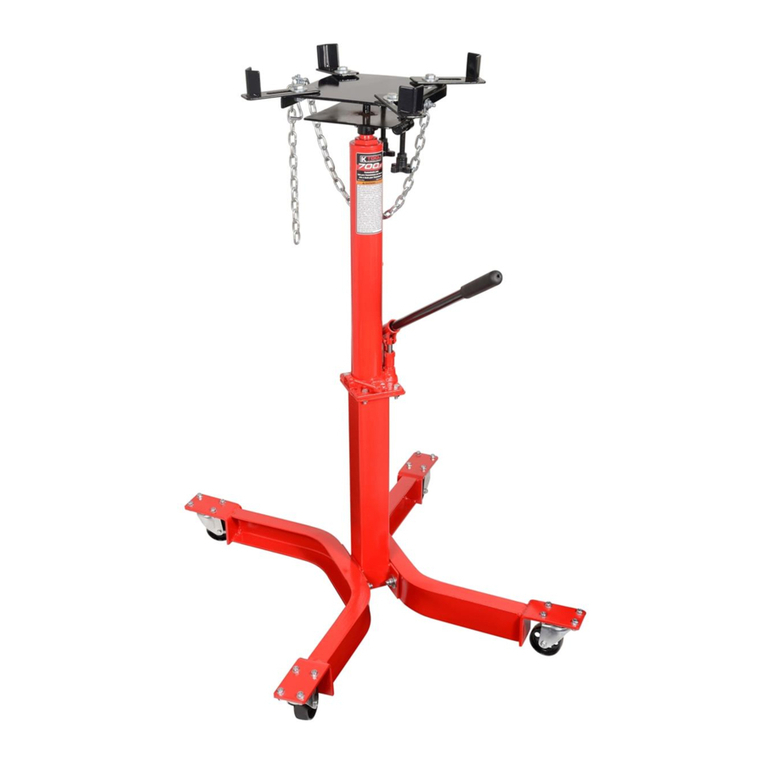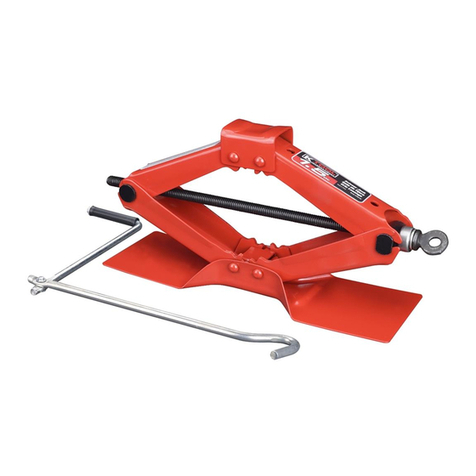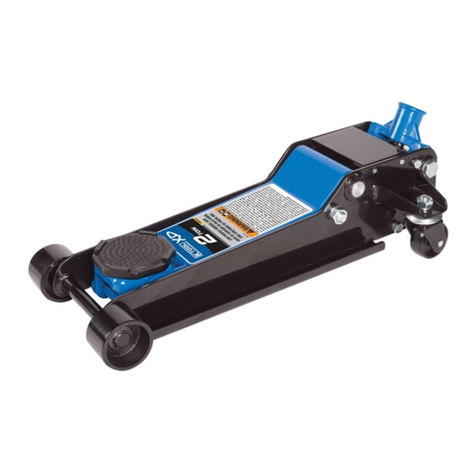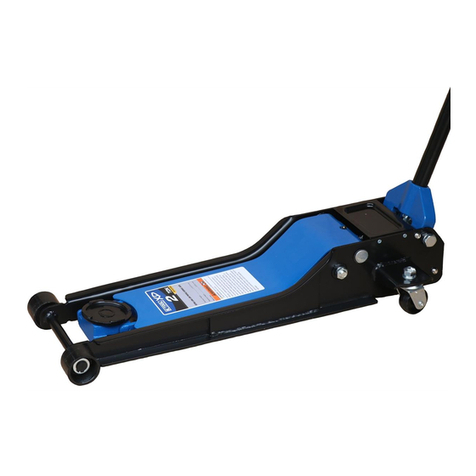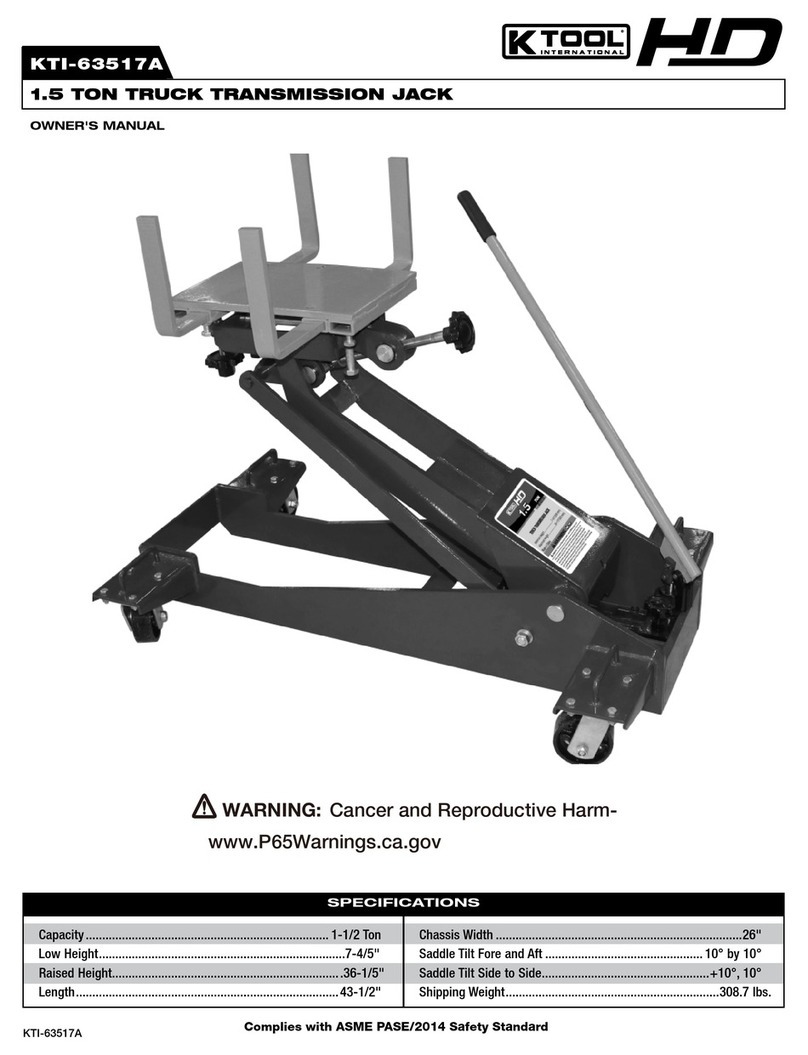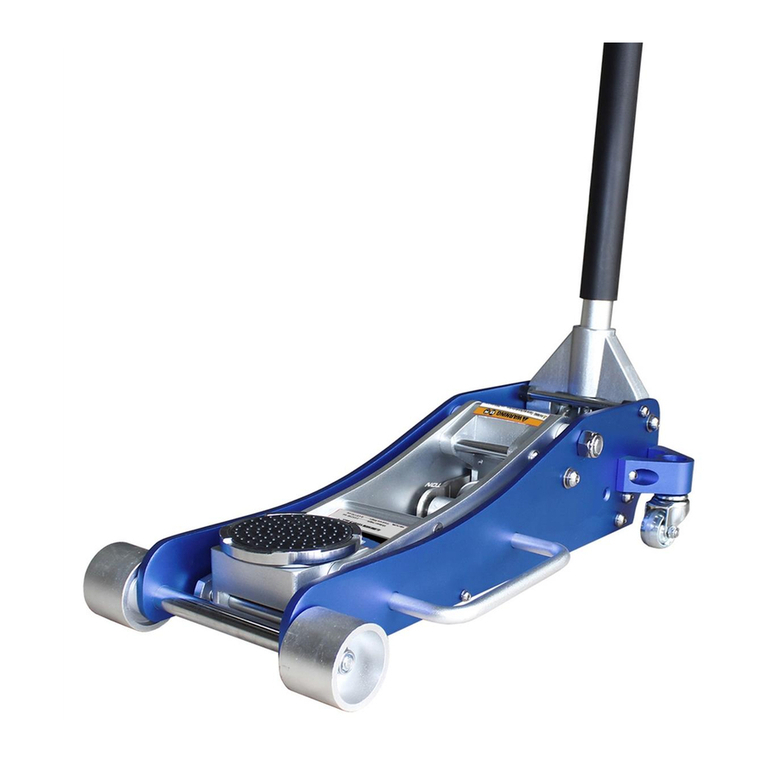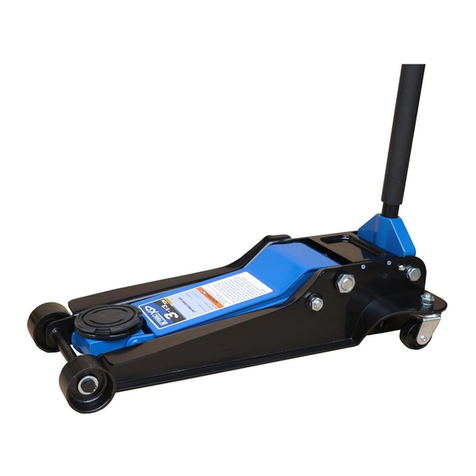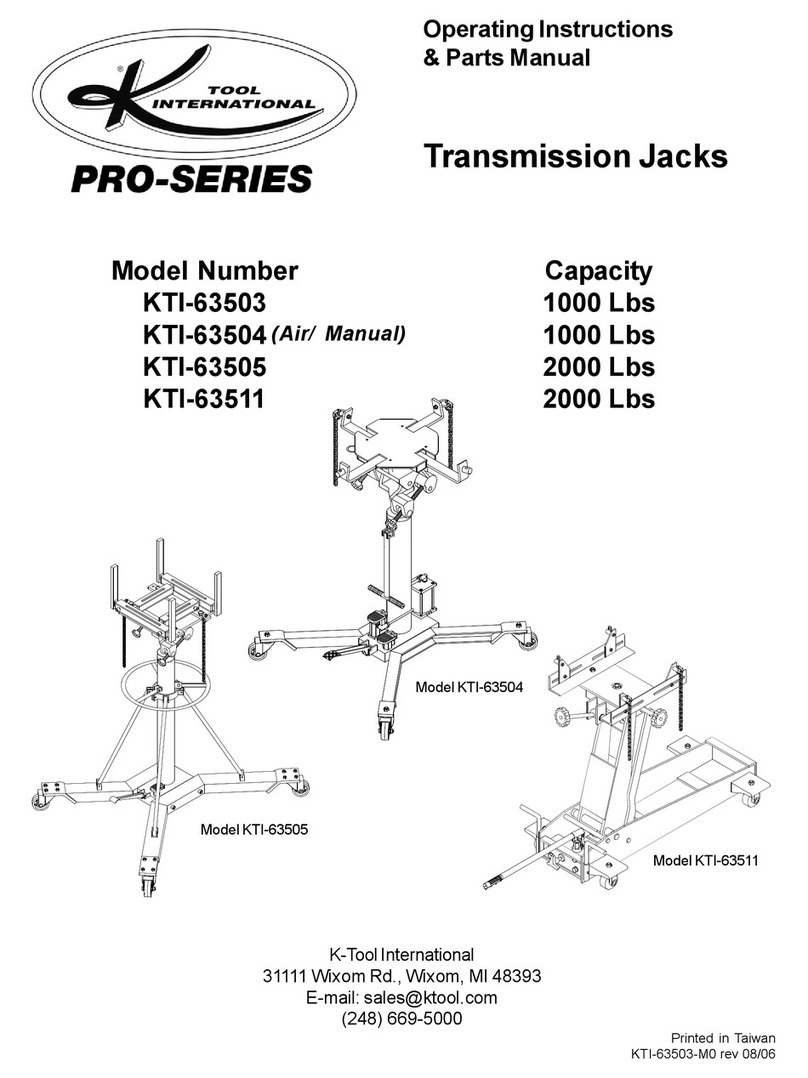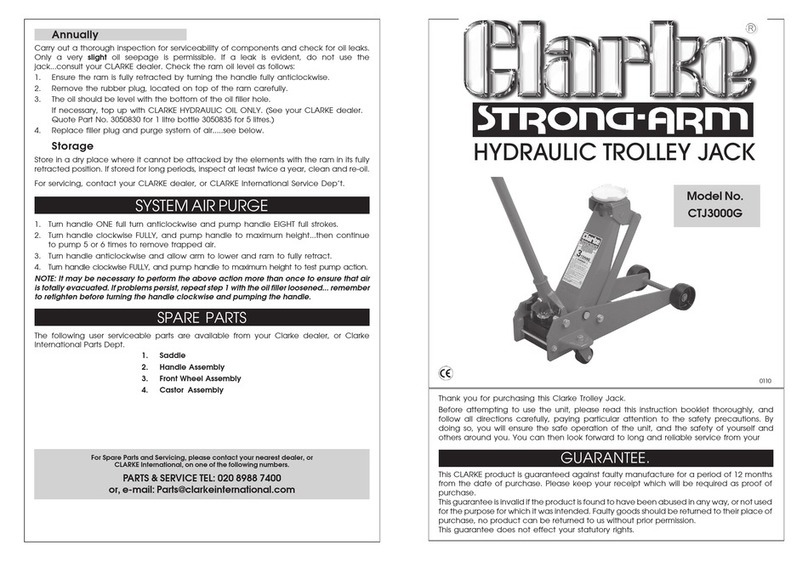
KTI63131A 8 01/18/18
MONTAJE
CONSULTE POR FAVOR EL DIBUJO DE VISTA EN DETALLE EN ESTE MANUAL PARA IDENTIFICAR
LAS PARTES.
1. Secure the 2 Pc. handle #27 together with the bolt #30.
2. Inserte el mango en el casquillo del mango #18 y gírelo de un lado para otro hasta que el vínculo de liberación adentro del casquillo
se encaje en la parte inferior del mango. Sujete el mango en el casquillo del mango usando el perno del mango #19.
3. Se puede atrapar aire en el sistema hidráulico durante el envío y transporte. El aire atrapado podrá afectar el rendimiento de bombeo
del gato. Si esto mismo se ocurre, siga el procedimiento de purga a continuación:
a) Gire el mango en el sentido de las agujas del reloj hasta que esté apretado. Gire el mango dos rotaciones completas en el sentido
de las agujas del reloj. Bombee el mango aproximadamente 15 recorridos de bombeo completos.
b) Gire el mango en el sentido de las agujas del reloj hasta que esté apretado. Proceda a bombear el gato hasta lograr
su máxima altura.
c) Repita los pasos a) y b) hasta que se haya purgado todo el aire del sistema.
INSTRUCCIONES DE USO
Este símbolo indica una alerta de seguridad y se utiliza en la parte de este manual que versa sobre las INSTRUCCIONES
DE USO, con el n de advertir sobre los peligros de accidentes personales. Observe todas las instrucciones para evitar
lesiones o peligros de muerte. IMPORTANTE: antes de comenzar a elevar un vehículo, consulte su manual de servicio
para conocer las supercies de elevación recomendadas.
FORMA DE USO:
1. Para levantar la carga: Gire el mango en el sentido de las agujas del reloj hasta que esté apretado. Coloque el gato debajo de la
carga. Proceda a bombear el mango para levantar el brazo de levantamiento hasta el nivel de la carga. En le medida que la silla en el
extremo del brazo de levantamiento se acerque a la carga, posicione el gato de nuevo, con el n de que la silla tenga contacto rme
con la carga y la carga esté centrada sobre la silla. Asegúrese que la silla esté posicionada correctamente. Levante la carga hasta la
altura de trabajo deseada. Coloque los soportes del gato de la capacidad adecuada en los puntos de soporte recomendados por el
fabricante, los que brindan un soporte estable para el vehículo levantado. ¡NO SE ARRASTRE DEBAJO DEL VEHÍCULO
MIENTRAS QUE SE ESTÉ LEVANTANDO EL VEHÍCULO O AL MOMENTO DE QUITAR LOS SOPORTES DEL GATO! Una vez
que los soportes del gato estén posicionados, gire el mango MUY LENTAMENTE. Baje la carga hasta que se recargue sobre los
soportes del gato. Inspeccione la relación entre los soportes de gato y la carga para asegurar que el montaje esté estable y seguro.
Si el montaje no esté seguro ni estable, siga los pasos anteriores hasta que esté corregido.
2. Para bajar la carga: Siga los procedimientos mencionados en la sección de "para levantar la carga" de las INSTRUCCIONES DE
OPERACIÓN para levantar la carga fuera de los soportes del gato. Una vez que la carga sea liberada de los soportes del gato, quite
los soportes de debajo de la carga y colóquelos lejos del área de trabajo. Gire el mango muy lentamente en el contrasentido de las
agujas del reloj hasta que la carga esté completamente bajada al piso. Una vez que la silla de levantamiento del gato se haya
despejado de la carga, quite el gato de debajo de la carga. ¡NO SE ARRASTRE DEBAJO DEL VEHÍCULO MIENTRAS QUE SE
ESTÉ LEVANTANDO EL VEHÍCULO O AL MOMENTO DE QUITAR LOS SOPORTES DEL GATO!
PRECAUCIÓN: Mantenga las manos y los pies lejos del eje de articulación del gato.
MANTENIMIENTO DE SEGURIDAD
Este símbolo indica una alerta de seguridad y se utiliza en la parte de este manual que versa sobre el MANTENIMIENTO
DE SEGURIDAD, con el n de advertir sobre los peli ros de accidentes personales. Observe todas las instrucciones para
evitar lesiones o peligros de muerte.
1. Siempre guarde el gato en un área protegida, en donde no quede expuesto a las condiciones climáticas, gases corrosivos,
sustancias abrasivas u otros materiales perjudiciales. Previo al uso, el gato debe estar limpio de agua, nieve, arena, arenilla,
aceite, grasa y otro material foráneo.
2. El gato deberá estar lubricado periódicamente con el n de prevenir el desgaste prematuro de las partes. Una grasa de uso general
deberá aplicarse a las ruedas de rodaja, el eje delantero, el brazo elevador, los pernos de pivote de la base de la manivela, el
mecanismo de liberación, y todas las demás supercies de soporte de carga. Las partes des gastadas resultando de la lubricación
inadecuada o faltante no serán elegibles para consideraciones de garantía. IMPORTANTE: Con el n de prevenir daños al sello y fallas
del gato, nunca use alcohol, líquido hidráulico para frenos ni aceite de transmisiones en el gato. Use un aceite hidráulico para gatos,
un aceite ligero para turbinas, aceite AW ISO 32 de Chevron o AW 150 Unax de Unocal.
3. Cada propietario de gato será responsable por mantener limpias y legibles las etiquetas del gato. Use una solución de jabón suave
para lavar las supercies externas del gato pero no lave ningún componente hidráulico móvil.
4. No intente realizar ninguna reparación hidráulica al menos que usted sea un individuo calicado en las reparaciones hidráulicas
familiarizado con este equipo. Si el vehículo se empuje fuera del gato, o si el gato está sujetado a una carga de choque, descarte el
gato y no lo use de nuevo.
5. No intente realizar ninguna reparación hidráulica al menos que usted sea un individuo calicado en las reparaciones hidráulicas
familiarizado con este equipo.
